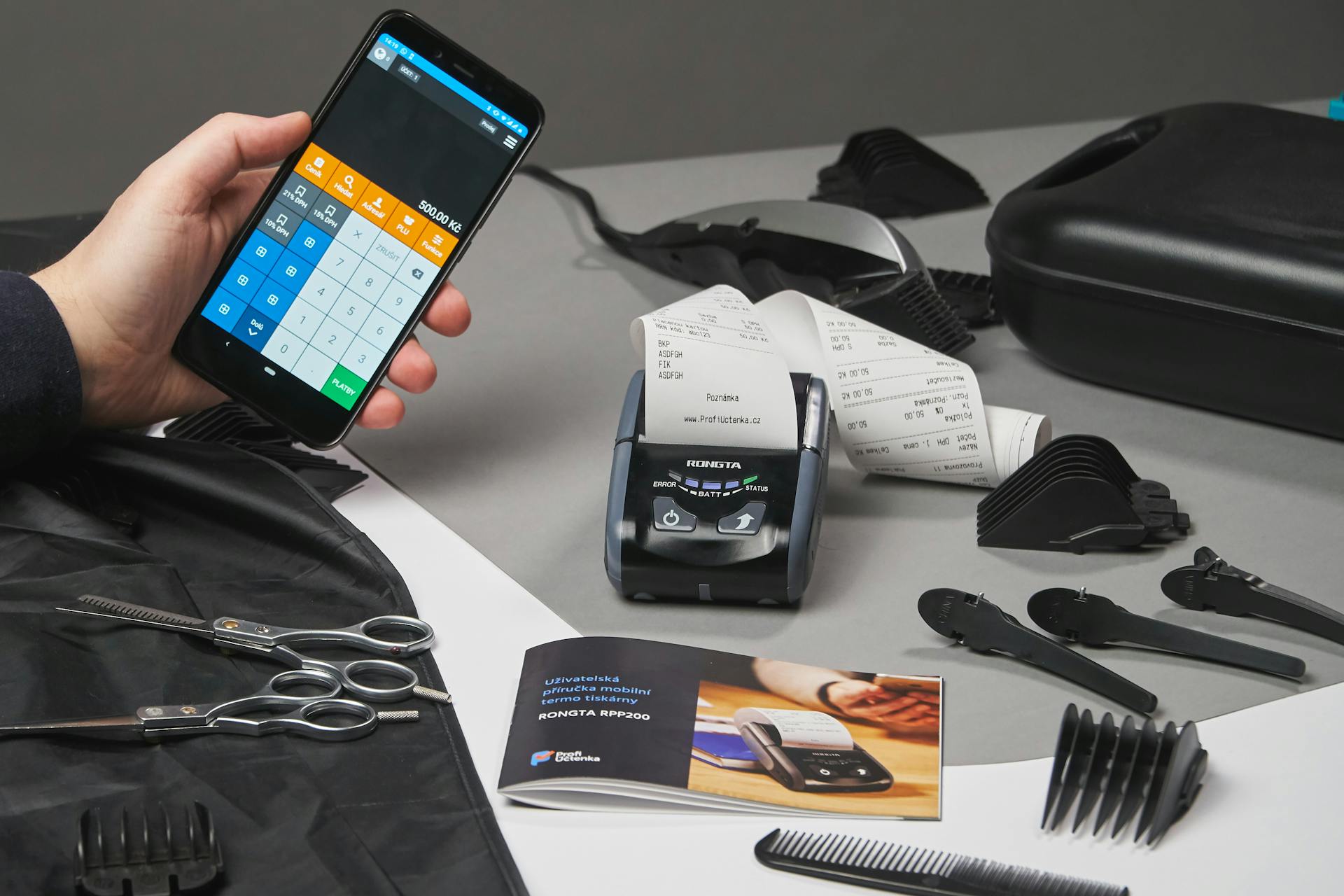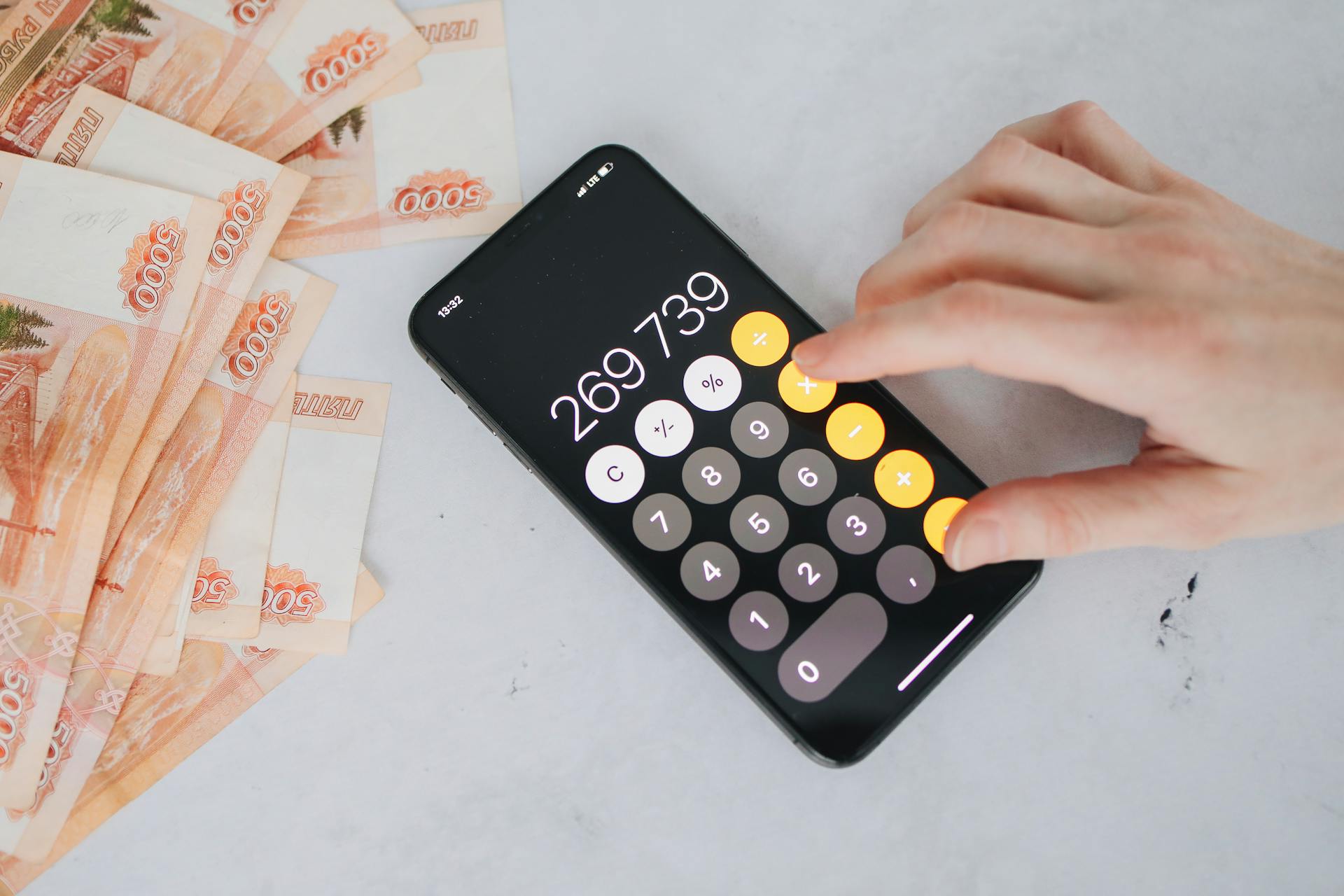
Reconciling your checkbook is a crucial step in managing your finances. It's essential to match your checkbook balance with your bank statement balance to ensure accuracy.
Start by gathering all your checkbook records, including checks, deposits, and withdrawals. This will help you track every transaction and identify any discrepancies.
A checkbook register can be a valuable tool in reconciling your checkbook. It allows you to record every transaction, making it easier to balance your checkbook and bank statement.
To begin reconciling, compare your checkbook balance with your bank statement balance. If they don't match, start by identifying any outstanding checks or deposits that haven't been processed yet.
Check this out: Td Bank Check Ordering
Recording Transactions
Recording transactions is a crucial part of managing your checkbook. You'll want to start by writing down the details of each transaction in the description of transaction field.
For a check or debit card purchase, this might include the person or business you spent money with, the reason recorded on the check's memo line, or a combination of the two. For a deposit, this could be the person or business who gave you the money, or if you're receiving interest on an interest-bearing account, simply write "Interest."
A fresh viewpoint: Sample of Cash Flow Statement for Small Business
To fill in the amount, you'll need to know whether it's a deposit, payment, or withdrawal. Most check registers provide separate columns for recording payments or withdrawals and deposits. Don't forget to include the amount of any tip if you're recording a debit card payment to a restaurant.
You'll also need to calculate and record your new balance. To do this, subtract the amount of any payment or withdrawal from the current balance, or add the amount of any deposit or interest payment to the current balance. Record the new balance in the space in the Balance column at the far right under the previous balance.
Here's a quick rundown of the steps to record a transaction:
Remember to keep all your checkbook registers for at least seven years, in case you need to reference them for tax purposes or to resolve a payment dispute. You can keep them in the same file as your yearly income tax information for easy access.
Balancing Your Checkbook
Balancing your checkbook is essential to ensure your account balance matches the bank's balance. It's a simple process that involves recording all transactions in your checkbook's check register.
Every time you spend money or make a deposit, you should record it in your checkbook's check register. This includes checks, ATM withdrawals, debit card payments, and deposits.
To match your book balance to the bank balance, you must reconcile the two. This involves comparing the ending balance of your checkbook to the bank's statement balance.
A bank reconciliation is usually performed to reconcile the differences between your book and bank balance. This can be done using the bank to book reconciliation, book to bank reconciliation, or adjusted balance reconciliation method.
The adjusted balance reconciliation method is commonly used to arrive at the correct adjusted amount. This involves adjusting the bank balance by deposits in transit, outstanding checks, and errors made by the bank.
Intriguing read: Sampling Method
To make balancing your checkbook easier, you can follow some simple steps. First, keep track of all transactions in your checkbook's check register.
You should also reconcile your bank statement each month. This involves downloading a balancing worksheet and entering the information from your checkbook register and bank account statement.
If your adjusted checkbook and account balance match, your checking account is balanced. If there are differences, you can check your math, look for outstanding checks, and double-check for fees or transactions.
Keeping a checkbook helps you monitor your bank and catch any errors they might make. By doing your own calculation, you can rest assured that you're not losing money to mistakes.
Suggestion: Free Budgeting App That Connects to Bank Account
Keeping Good Records
Keeping a checkbook register is essential for tracking your financial transactions and maintaining accurate records. You should keep all checkbook registers for at least seven years, in case you need them for tax audits or payment disputes.
It's a good idea to write checks for charitable donations, as this will provide you with the necessary information to record these amounts on your tax returns. You can circle the entry in your register, use a highlighter, or write "donation" next to the organization name.
If you write a large number of checks, consider ordering checkbooks with a carbon copy. This will give you a record in case you forget to record a check.
To keep your checkbook register up to date, make sure to include all deposits, online purchases, withdrawals, and other transactions affecting your account. This will help you keep track of your current balance and ensure that your records are accurate.
Here's a simple checklist to help you keep your checkbook register organized:
- Date
- Description of Transaction
- Amount
- New Balance
By following these steps and keeping good records, you'll be able to easily track your financial transactions and maintain accurate records.
Using Sample Templates
Using sample templates can be a great way to create a check register that suits your needs. You can use them as references to make your own check registers by following the format given in the samples.
Blank templates are even more useful as they provide you with a ready-to-use check register template that you can customize as your own. To use them, simply enter your withdrawals and deposits in the defined regions to calculate the net balance.
Sample check register templates tell you the correct way of maintaining a check register, which is essential for keeping accurate financial records.
For more insights, see: How to Use a Secured Credit Card with $300 Limit
Who Is This For?
When filling out a check, it's essential to know who the payment is for. You write the name of the person or company you want to pay in the "Pay to the order of" line.
You can also write "cash" if you don't know the exact name, but be aware that this can be risky if the check gets lost or stolen. Anyone can cash or deposit a check made out to "cash."
For more insights, see: Fidelity Joint Cash Management Account
Using Sample Templates
Sample templates are a great way to get started with creating your own check register. They provide a format and structure to follow, making it easier to keep track of your transactions.
To use a sample template, you should use it as a reference to create your own check register. You can do this by using the format given in the sample to create a check register for yourself.
Sample check register templates should be used based on the types of templates they are. If the templates are examples of check registers, you should use them as references to make your own check registers.
You can make use of the formulae used in the sample to make your own check register in a word processing program like Excel. Blank templates can be directly used by entering withdrawals and deposits in their defined regions to calculate the net balance.
There are various benefits of using sample check register templates. These templates tell you the correct way of maintaining a check register, which is essential for keeping financial records in a systematic way.
Here are some steps to follow when using a sample template:
- Record your transactions by writing down the check number, date, and description of the transaction.
- Make sure to subtract the amount of any checks, withdrawals, payments, and bank fees, or add in deposits to the total amount in your account from the previous transaction.
- Calculate and record your new balance by subtracting the amount of any payment or withdrawal from the current balance, or adding the amount of any deposit or interest payment to the current balance.
By following these steps and using a sample template, you can create a check register that helps you keep track of your transactions and stay on top of your finances.
Large

Large sample templates can be overwhelming, but they're also incredibly valuable for getting started on a project.
For example, a large template can include multiple sections, such as a cover page, table of contents, and several pages of content.
Sample templates can be a great way to get a feel for what a finished project will look like.
In fact, a large template might include up to 20 pages of content, giving you a clear idea of how to structure your project.
The key to using a large template effectively is to customize it to fit your specific needs.
Frequently Asked Questions
What do you write in a checkbook?
When writing a check, include the date, payee's name, dollar amount in numbers and words, a memo (if desired), and your signature. This information helps ensure a valid and accurate transaction.
What is a check template?
A check template is a preformatted document that streamlines check production, saving time and costs. It simplifies the process of creating checks, making it more efficient.
Sources
- https://www.huntington.com/learn/checking-basics/how-to-write-a-check
- https://www.wikihow.com/Fill-Out-a-Checkbook
- https://www.examples.com/business/printable-checkbook-register-examples-pdf.html
- https://www.template.net/business/checklist-templates/sample-check-register/
- https://www.examples.com/business/simple-checkbook-register.html
Featured Images: pexels.com


